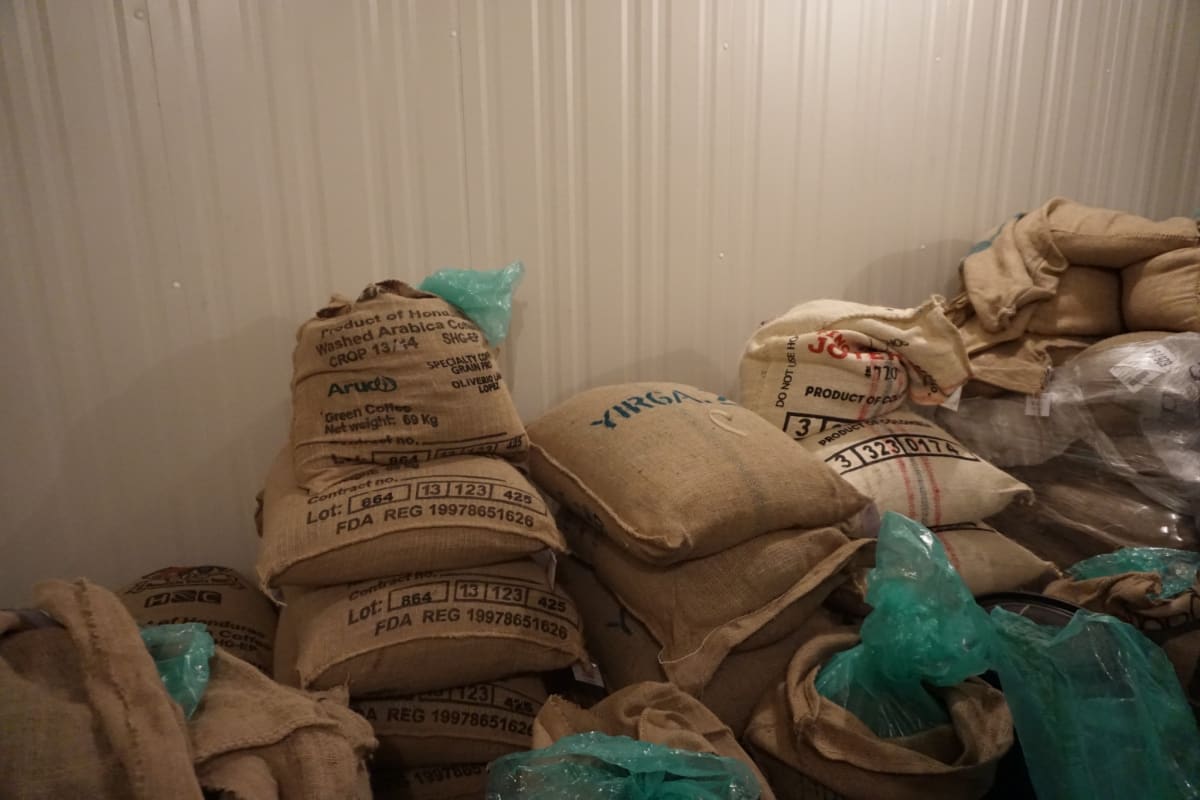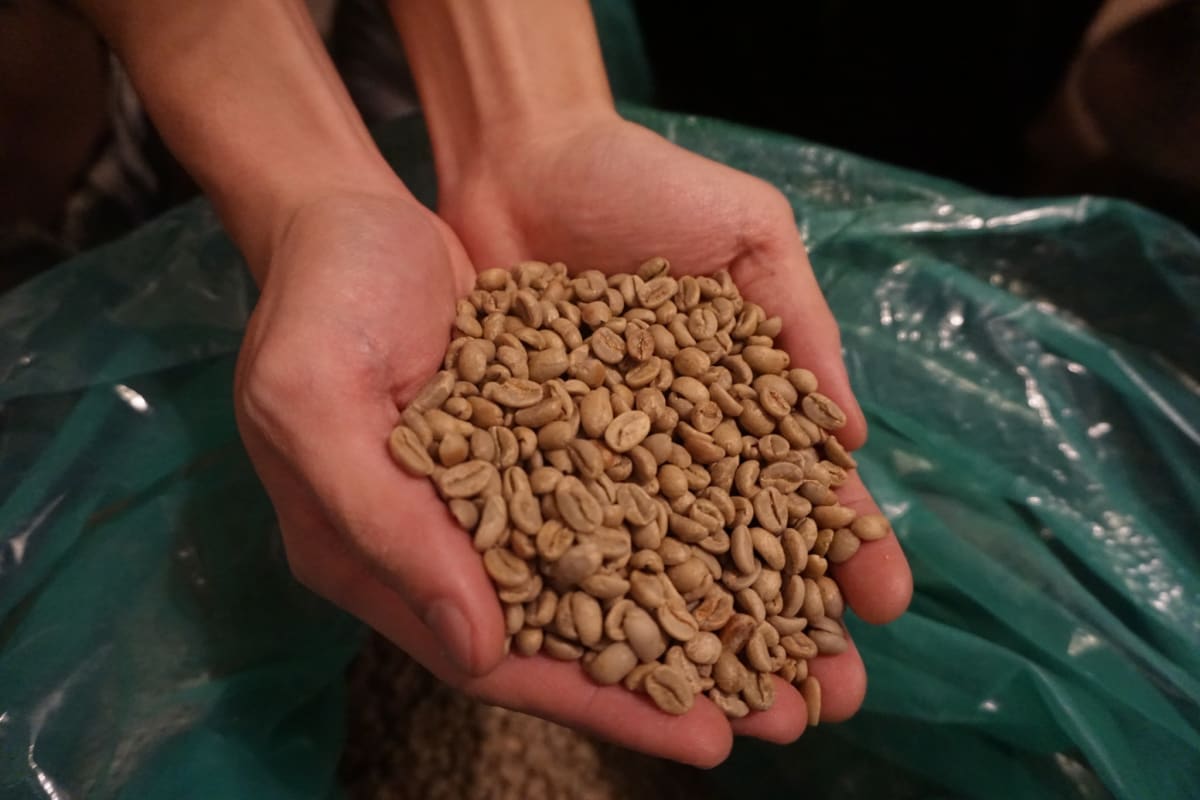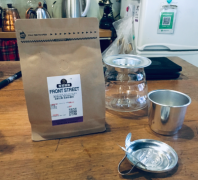[coffee roasting] what are the chemical changes in coffee beans during roasting?
Professional coffee knowledge exchange more coffee bean information please follow the coffee workshop (Wechat official account cafe_style)
Do you know what happens when roasting coffee beans? What are the chemical changes that transform raw coffee beans into coffee ripe beans with charming flavor and rich aroma?
In the previous article we saw that the structure of coffee beans played an important role in making physical changes in the baking process smoothly. In this article, let's take a look at the chemical changes that occur during baking, including how flavors and aromas develop.

Bagged raw beans in a baking factory
Major chemical reactions
Heating coffee beans triggers hundreds of different chemical reactions. Baking degrades some compounds, changes others, and produces new ones.
You may have heard someone say that when an organic substance is heated above its decomposition temperature, it produces volatile compounds and leaves solid residues containing large amounts of carbonization or coke. During coffee roasting, we avoid overheating coffee beans to cause carbonization, but they do undergo chemical changes associated with pyrolysis, including caramelization and the production of volatile compounds.
Here are the main chemical changes that come with baking:
Maynard reaction
This reaction occurs at about 150 ℃, when the coffee beans are still absorbing heat and continue to release heat during the baking process. Calories lead to reactions between carbohydrates and amino acids in beans, leading to changes in color, taste and nutrients.
The color change is mainly due to the production of melanin, which not only turns the coffee beans brown, but also affects the taste and mellow thickness of the coffee.
Any small change in the temperature and time of Maynard's reaction at this stage may have a great impact on the final flavor.
Coffee that takes a longer time in the Maynard reaction increases its viscosity, while a shorter Maynard reaction produces more sweetness and acidity, because if Maynard takes too long, the acid and the acid that converts to sweetness will be destroyed.
When the bean baker experimented with baking techniques, it also included changing the length and intensity of Maynard's reaction and recording how these changes would affect the final flavor.

Raw coffee beans
Degradation reaction
This procedure depends on Mena's reaction, where amino acids react with carbonyl groups to produce compounds such as aldehydes and ketones. The baker doesn't need to know exactly what these compounds are. it's important to recognize that this reaction is essential for compounds that produce aromas and flavors.
Caramelization of sugars
When heated to about 170 ℃, the heat breaks down large amounts of complex carbohydrates into smaller sugar molecules that can be dissolved in water, indicating an increase in the sweetness of the final brewed coffee. This reaction continues until the end of the baking process, and it also contributes to the sweet aromas of coffee, such as caramel and almonds.
Bean baking machine
Volatile and non-volatile compounds
You may have heard that volatile and non-volatile compounds are produced during baking. Generally speaking, volatile compounds are aroma and non-volatile compounds are flavors. But what kind of substance are these?
Volatile compounds are organic chemicals with high vapor pressure at room temperature, many of which are formed in the degradation reaction or in the development stage of baking. When the volatile compounds escape, we will smell the unique aroma of this coffee, including:
Aldehydes: bring fruit aroma, green aroma.
Furan: helps caramel smell
Pyrazine: has the smell of dirt.
Sulfur compounds: including 2-furfuryl mercaptan. Some of these compounds are often described as having the aroma of "roasted coffee", but some substances are unpleasant when smelled independently. For example, methanethiol smells like rotten vegetables.
Guaiacol: has the smell of smoke and spice.
Carbon dioxide is a volatile substance that does not affect the aroma, but does affect the thickness of alcohols.
A running bean baking machine
Non-volatile compounds are usually stable at room temperature, which means they do not evaporate. These parts of the compounds will change during the baking process, while the rest of the compounds will remain stable throughout the baking process, and non-volatile compounds help to produce flavor.
Caffeine, for example, may bring some bitterness. Caffeine occurs naturally in coffee and remains the same during roasting. Other non-volatile compounds, including sucrose that provides sweetness, oils that provide alcohol thickness and taste, and protein melanin, which produce color and alcohol thickness, are non-volatile compounds.
The role of acid
Acids play an important role in producing flavor. Baking can degrade some acids and produce other acids.
For example, citric acid and tartaric acid, which produce sour and sweet flavors, decompose during baking. So roasting for a long time or overheated will greatly reduce the sweetness of the final coffee.
Coffee contains a lot of chlorogenic acid, which can be broken down into caffeic acid and quinic acid when roasted. Chlorogenic acid and quinic acid are both thought to form bitterness and astringency.
Freshly roasted coffee beans
Coffee roasting includes many chemical changes that contribute to the development of flavor, aroma and alcohol thickness in coffee cups. Many reactions are sensitive to temperature changes and the length of heating. Therefore, small changes in baking technology will have a far-reaching impact on flavor characteristics.
Understanding what happens during baking and why these changes occur will help you make wiser choices. If you have an idea of how these compounds are produced during baking, you can better understand what's wrong with your baked batch, or use this information correctly to make the next pot more successful.
Translated from Perfect Daily Grind. Translated by Cheng Zhen Coffee
END
Important Notice :
前街咖啡 FrontStreet Coffee has moved to new addredd:
FrontStreet Coffee Address: 315,Donghua East Road,GuangZhou
Tel:020 38364473
- Prev

[Qianjie barista's Note] Vietnam drip filter cup to do hand-flushing, brewing parameter experiment
Professional coffee knowledge exchange more coffee bean information Please follow the coffee workshop (Wechat official account cafe_style) A few days ago the editor heard a question, [Vietnam drip filter cup] can be used as a filter cup? The answer is yes. Basically, any instrument that may play a filtering role can act as a filter cup. That's the problem. When we use the Vietnamese trickling filter pot to do hand flushing, the grinding degree is done by hand.
- Next

How to make coffee by hand? What are the key points to pay attention to in practicing hand flushing?
Professional coffee knowledge exchange more coffee bean information Please follow the coffee workshop (Wechat official account cafe_style) I have been playing with my hands for more than a year, the quality of the coffee is good and bad, most of it is not good, so I am not very dare to brew it to my friends, how on earth should I practice to make it good? Similar questions have been asked many times and several common phenomena have been observed.
Related
- Beginners will see the "Coffee pull flower" guide!
- What is the difference between ice blog purified milk and ordinary milk coffee?
- Why is the Philippines the largest producer of crops in Liberia?
- For coffee extraction, should the fine powder be retained?
- How does extracted espresso fill pressed powder? How much strength does it take to press the powder?
- How to make jasmine cold extract coffee? Is the jasmine + latte good?
- Will this little toy really make the coffee taste better? How does Lily Drip affect coffee extraction?
- Will the action of slapping the filter cup also affect coffee extraction?
- What's the difference between powder-to-water ratio and powder-to-liquid ratio?
- What is the Ethiopian local species? What does it have to do with Heirloom native species?

